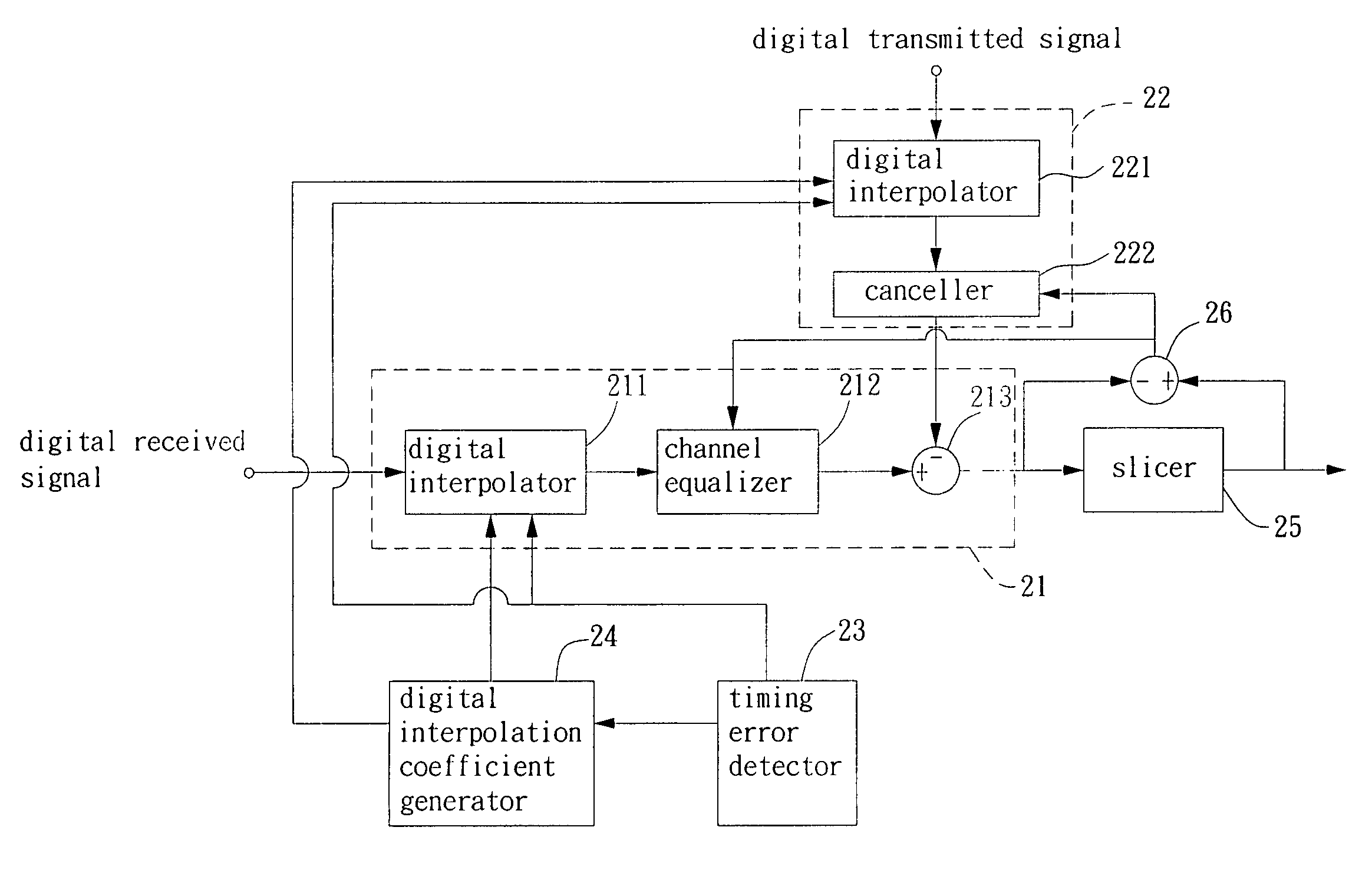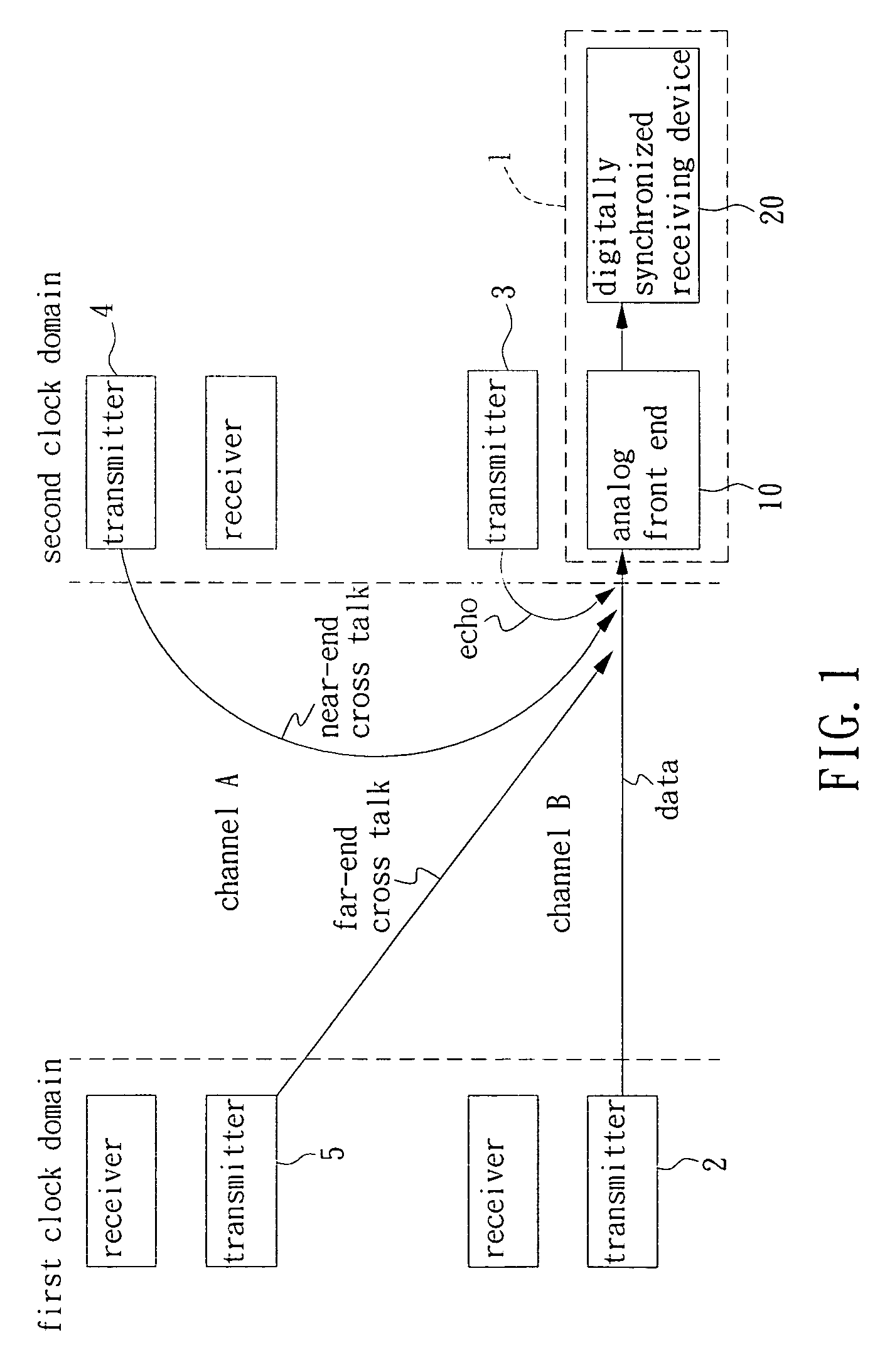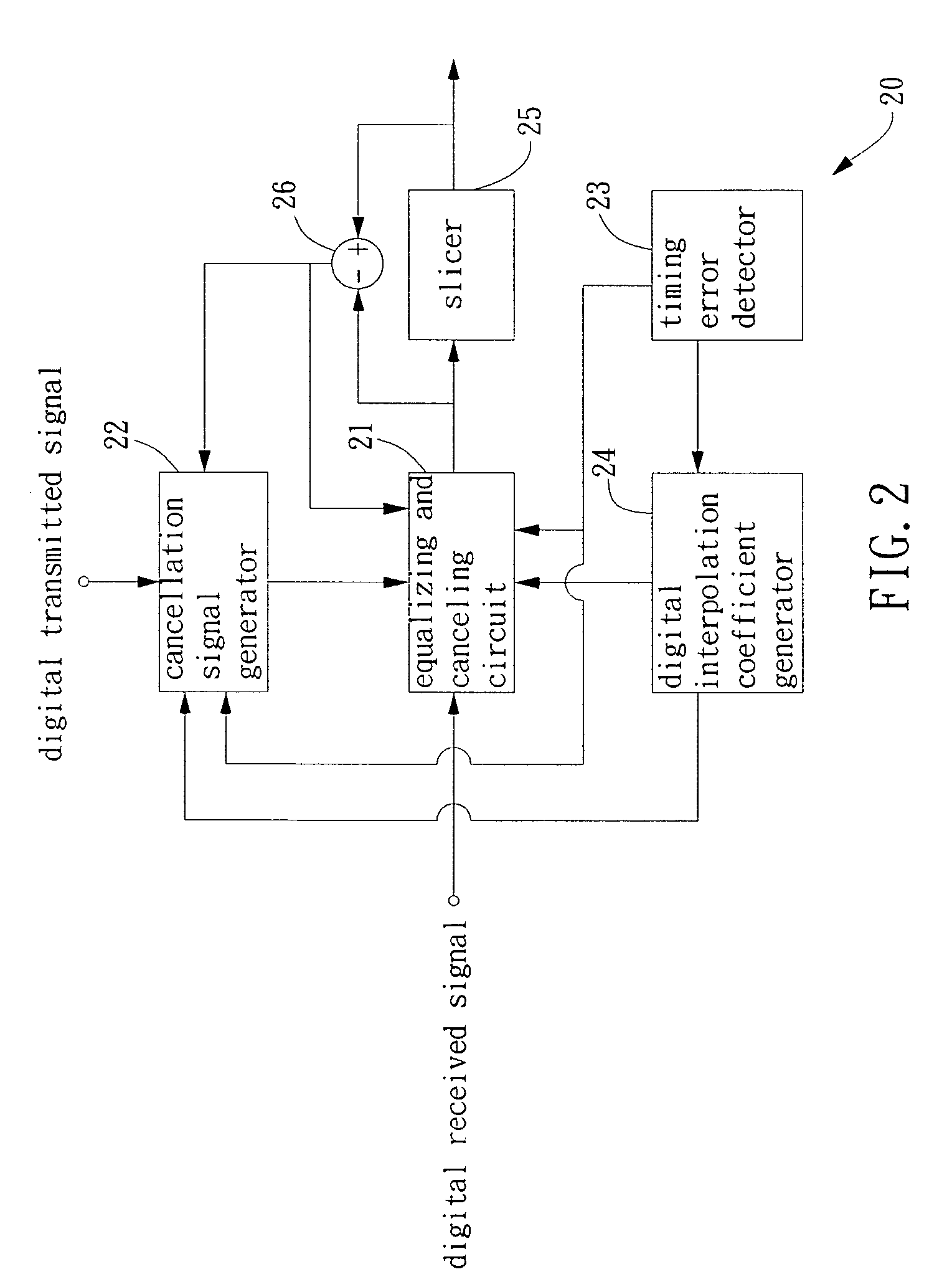Digitally synchronized receiving device and associated signal processing method
a digital synchronization and receiving device technology, applied in the field of communication systems, can solve problems such as errors in data reception, analog-based solutions, and high probability of jitter in each respective clock
- Summary
- Abstract
- Description
- Claims
- Application Information
AI Technical Summary
Benefits of technology
Problems solved by technology
Method used
Image
Examples
first embodiment
[0041]In FIG. 3, the digital transmitted signal belongs to the second clock domain, and the cancellation signal generator 22 includes a digital interpolator 221 and a canceller 222. The digital interpolator 221 performs the first digital interpolation operation on the digital transmitted signal according to the digital interpolation coefficients generated by the digital interpolation coefficient generator 24, such that the digital transmitted signal is converted to the first clock domain. The canceller 222 is coupled to the digital interpolator 221 and the adder 26, and generates the digital cancellation signal according to the converted digital transmitted signal and the error signal, wherein the canceller 222 itself is a filter and can perform the adaptation according to the error signal so as to generate a more accurate digital cancellation signal. On the other hand, the equalizing and canceling circuit 21 includes a digital interpolator 211, a channel equalizer 212 and an adder ...
second embodiment
[0042]In FIG. 4, please notice the order of the channel equalizer 212 and the adder 213 in the equalizing and canceling circuit 21. As shown in FIG. 4, the adder 213 lies before the channel equalizer 212, that is, the digital interference cancellation is performed before the channel equalization.
[0043]In the third embodiment of FIG. 5 and the fourth embodiment of FIG. 6, please notice the implementation of the equalizing and canceling circuit 21. In FIG. 5, the channel equalizer 212 lies before the digital interpolator 211 such that the channel equalization can be performed before the digital received signal is converted to the first clock domain. Thus, before being provided to the channel equalizer 212, the error signal originally belonging to the first clock domain needs to pass through a digital interpolator 214 which can perform the second digital interpolation operation to convert the error signal from the first clock domain to the second clock domain. The digital interpolator ...
fifth embodiment
[0046]In FIG. 7, please notice the implementation of the cancellation signal generator 22. In FIG. 7, the canceller 222 lies before the digital interpolator 211 such that the digital cancellation signal is first generated according to the digital transmitted signal and then sent to the digital interpolator 221 to being converted to the first clock domain. Thus, before being provided to the canceller 222 for adaptation, the error signal originally belonging to the first clock domain needs to pass through a digital interpolator 223, which is coupled to the digital interpolation coefficient generator 24 and performs the second digital interpolation operation to convert the error signal to the second clock domain.
[0047]In the sixth embodiment of FIG. 8 and the seventh embodiment of FIG. 9, please notice the implementation of the equalizing and canceling circuit 21. In FIG. 8, the channel equalizer 212 lies before the digital interpolator 211 such that the channel equalization can be per...
PUM
 Login to View More
Login to View More Abstract
Description
Claims
Application Information
 Login to View More
Login to View More - R&D
- Intellectual Property
- Life Sciences
- Materials
- Tech Scout
- Unparalleled Data Quality
- Higher Quality Content
- 60% Fewer Hallucinations
Browse by: Latest US Patents, China's latest patents, Technical Efficacy Thesaurus, Application Domain, Technology Topic, Popular Technical Reports.
© 2025 PatSnap. All rights reserved.Legal|Privacy policy|Modern Slavery Act Transparency Statement|Sitemap|About US| Contact US: help@patsnap.com



